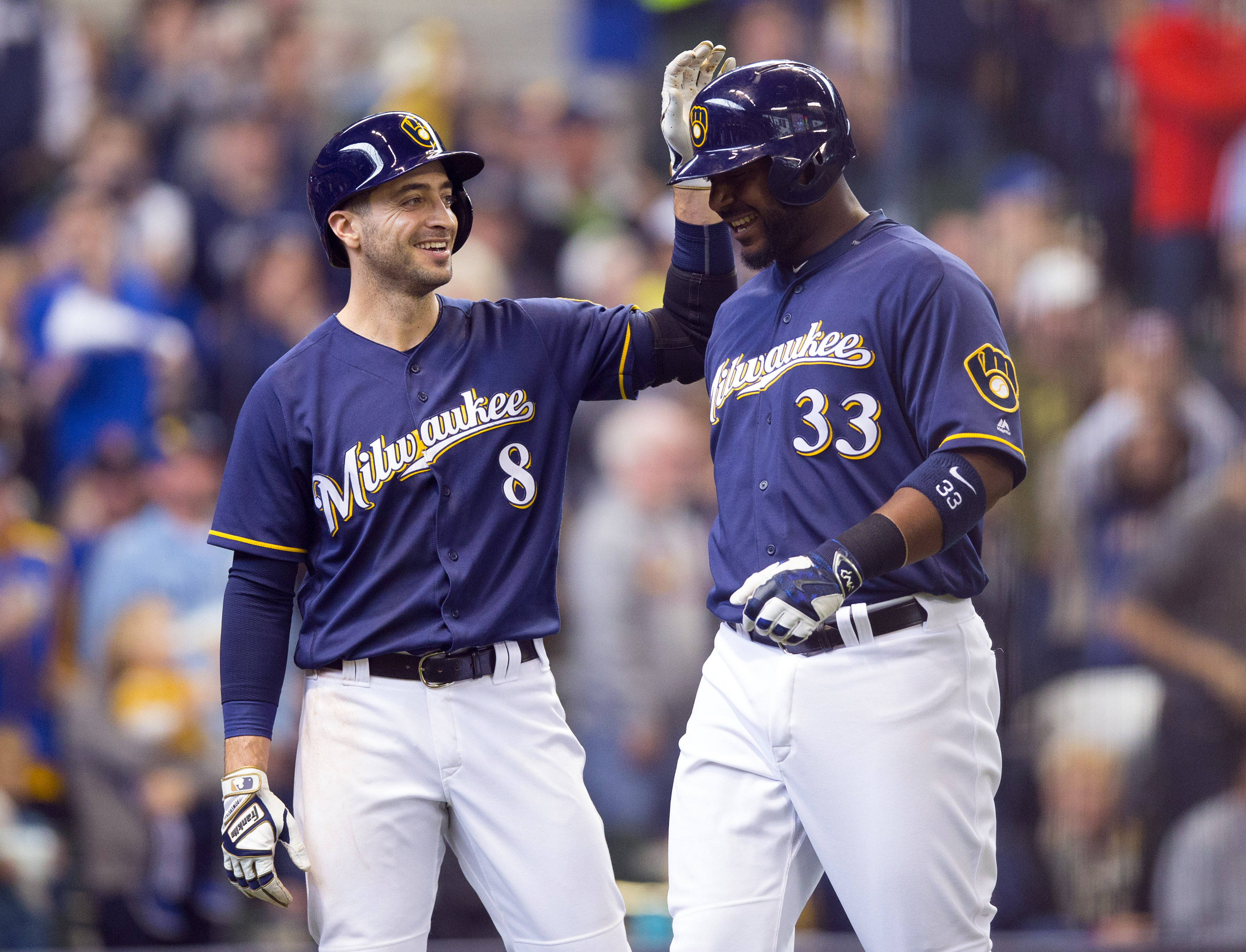There can be no disputing the fact that the Brewers are rebuilding. The club spent the offseason taking on upside plays, and they are not and should not be in any hurry to make moves to improve on their current fourth-place standing. But that sub-.500 record is the mainly the fault of the pitchers; the Brewers’ pitching staff ranks last in PWARP, while the position players rank twelfth in VORP.
Much of the offensive production has come from the middle of the Brewers’ order, where Ryan Braun, Chris Carter, and Jonathan Lucroy lead all regulars in TAv. And while none of these three players is at the same point in their respective careers, each has one thing in common: they are all veterans at or slightly past their peaks.
Braun is 32 and signed through 2020, and his contract is relatively hefty at approximately $20 million per year—although it is not as unwieldy as it appeared when the deal was signed. However, he is now several years removed from his MVP-level peak and no team will pay the kind of price the Brewers would have been able to charge a few years ago, no matter how well he hits.
Lucroy is in his age-30 season and he is under team control through next year. He famously commented during the spring that he didn’t want to play for a rebuilding team but the Brewers do not have to be in a hurry to trade their star catcher, particularly given his poor 2015 and apparent subsequent rebound. His 2016 this far has been excellent, to the tune of a .308 TAv.
Carter has the biggest opportunity for surplus value, but he is a 29-year-old whose best season before this one was a 2.6 WARP year with Houston in 2014. As he is arbitration-eligible and under team control for another two years after 2016, the Brewers ccould have a legitimate big league star on a cheap contract if everything breaks right. Even if Carter hits his best-case scenario, however, the Brewers won’t likely be ready to truly compete until his last year with the club at the earliest.
The point of this is to say that the Brewers’ current offensive strength is being driven by a core group of players that simply won’t be around in their current form by the time the organization is ready to compete again. They don’t look to have an exact timeline, but the frailties of the pitching staff indicate that the team is farther away than it would have hoped.
But this fact – despite being a net negative in terms of team-building – does not take away from these three players’ relative value to the Brewers. Having positive, productive players on young and rebuilding teams is not a bad thing, despite what the 2013 Astros would have you believe.
The most clear and obvious reason for this is trade value. Braun, Lucroy, and (most likely) Carter either will not be with the team or will not be this good when the club is competitive again, so an obvious way to maximize their future impact is to trade them. Lucroy, with his track record and cheap team option for next season, is clearly the most valuable asset here, but Braun and Carter (presuming this improvement is real) also have trade value. Braun’s bounce-back season coupled with rising salaries for top-end players makes him a more viable trade candidate than he otherwise appeared to be. If Carter remains a .300 TAv hitter, teams will be happy to take a flier on a post-hype sleeper with two more years of arbitration-controlled salaries.
On the field, though, there is likely some amount of positive value as well. First, despite the fact that there are no definitive conclusions about chemistry and a “winning culture,” it’s hard to imagine that getting blown out every night is good for young players’ emotional development. Instead, the Brewers get to take advantage of a productive middle of the order and use a competent offense to compete on most nights. They are not good enough to blow any chance at a top draft pick and more pool money, but the club is competitive and not a joke. There is likely some benefit to young players – particularly once Orlando Arcia and Brett Phillips make their debuts – being part of a team with good players and attempting to develop winning habits.
And second, there simply aren’t any young players who Lucroy, Braun, and Carter are blocking at this time. The Brewers’ best prospects are a shortstop and center fielder, so they aren’t losing any sort of development time by handing plate appearances to these veterans. In fact, having veterans who are able to anchor the middle of the lineup allows other players to hit in lower-pressure situations. Again, the club’s true building blocks are not yet on the big league roster, but even players such as Domingo Santana and Scooter Gennett benefit from not being the center of attention every night and having to deal with the pressure that comes with hitting in the middle of a lineup.
Braun, Lucroy, and (this version of) Carter are all good hitters toiling for a bad team, but that doesn’t mean they don’t provide any value. Whether it is serving as role models or simply providing positive on-field value, the three of them can in fact be productive and valuable to the Brewers.
